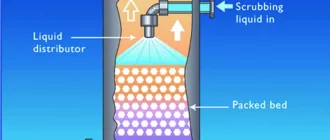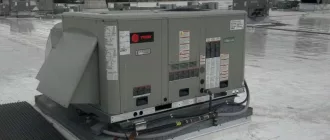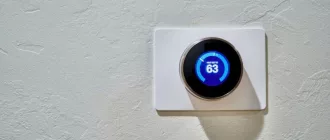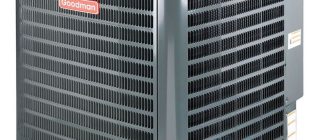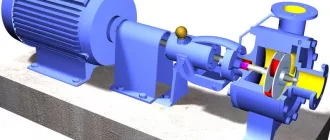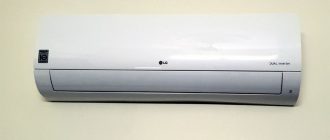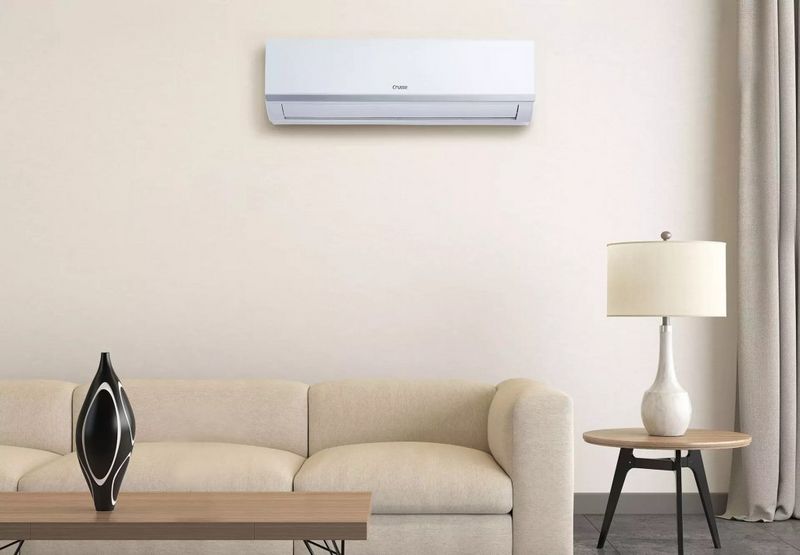
What are the disadvantages of split AC?
Split air conditioning units are a popular choice for cooling residential and commercial spaces. However, they are not without their disadvantages. It is important to be aware of the drawbacks of split AC units before making a purchasing decision.
One of the main disadvantages of split ACs is the regular maintenance they require. Filters and coils need to be cleaned or replaced regularly to ensure proper functioning. Failure to do so can result in reduced efficiency and increased energy consumption.
Another drawback is the dry air that split ACs produce. As these units remove humidity from the air to cool the space, it can lead to dryness and discomfort, especially during winter months or in dry climates. This can cause skin dryness, respiratory problems, and allergies.
Split ACs are also known for being inefficient in cooling large areas or multiple rooms. They are best suited for cooling specific zones and struggle to maintain consistent temperatures throughout a building.
Cost is another significant disadvantage of split ACs. They tend to be more expensive than window units or portable air conditioners, both in terms of the initial purchase and the cost of installation. Additionally, split ACs can lead to higher electricity bills, especially if the unit is not energy-efficient or if it is used for long durations.
Noise is another common complaint with split AC units. The indoor unit can produce noticeable noise levels during operation, which can be disruptive and annoying, particularly during sleep or quiet activities.
Lastly, the installation of a split AC may require some modifications to the space. This can include drilling holes in walls for connecting the indoor and outdoor units, running refrigerant lines, and installing electrical wiring. This installation process can be time-consuming and often requires professional help.
In conclusion, while split ACs offer many advantages, such as improved aesthetics and flexibility, they also come with several disadvantages. Maintenance, dry air, inefficiency, high costs, noise, high electricity bills, and installation requirements are important factors to consider before purchasing a split AC unit.
High Energy Consumption
One of the main disadvantages of split AC systems is their high energy consumption. These systems often require a significant amount of electricity to operate, leading to higher electricity bills for the user. The energy efficiency of split AC units can vary, but generally, they are less efficient compared to other types of air conditioning systems.
Split AC systems can be noisy and require regular maintenance to ensure proper functioning. The complexity of installation and the need for professional assistance can also add to the overall cost and inconvenience. Additionally, split AC units require a significant amount of space for installation, both indoors and outdoors.
Due to their high energy consumption and inefficiency, split AC systems can be more expensive to run in the long term compared to other alternatives. Therefore, it is important for consumers to consider the drawbacks of split AC systems and evaluate other options that may be more energy-efficient and cost-effective.
| Noisy | High electricity bills | Maintenance |
| Inefficient | Complexity of installation | Space |
| Expensive |
Expensive Installation Costs
One of the main disadvantages of split AC units is their high installation costs. The process of installing a split AC system is complex and requires professional assistance. This means that you will need to hire a qualified technician to properly set up the system, which can be quite expensive.
In addition to the initial installation costs, split AC units also require regular maintenance to ensure their proper functioning. This maintenance can add to the overall cost of owning a split AC system.
Furthermore, split AC units tend to have higher electricity bills compared to other types of air conditioning systems. This is because the split AC system typically consists of two separate units, the indoor and outdoor units, which both require electricity to operate.
The complexity of the split AC system also means that it can be less efficient than other types of air conditioning systems. The system may struggle to effectively cool or heat a large space, resulting in uneven temperatures and wasted energy.
Another drawback of split AC units is that they can be noisy. The outdoor unit, in particular, can produce loud noises during operation, which can be disruptive and irritating, especially if the unit is installed near windows or outdoor living spaces.
Lastly, split AC units require dedicated space for installation. The outdoor unit needs to be positioned in an outdoor area with proper ventilation, and the indoor unit must be installed on a wall or ceiling inside the room. This can limit the available space and may not be ideal for small or compact living spaces.
Difficulty in Installation
The installation process also involves connecting the indoor and outdoor units through a series of refrigerant pipes, electrical wirings, and drainage pipes. This can be a time-consuming and tedious task, especially if the room does not have a pre-existing air conditioning system. In such cases, additional work may be required to install the necessary piping and electrical connections.
Moreover, the installation of a split AC may cause disruptions to daily activities due to the noise and dust generated during the process. This can be particularly inconvenient for people living or working in the space where the installation is taking place.
Additionally, the installation of a split AC is more expensive compared to window ACs due to the complexity involved. Professional installation services often come at a high cost, which adds to the overall expense of purchasing and setting up a split AC system.
It is important to note that the installation of a split AC should be carried out by trained technicians or professionals to ensure proper functioning and prevent any potential damage to the unit or the property. Improper installation can lead to issues such as poor cooling, increased energy consumption, and the need for frequent maintenance.
| Dry Air |
| Inefficient |
| Maintenance |
| Noisy |
| Complexity |
| High Electricity Bills |
| Expensive |
Incompatibility with Older Homes
One of the major drawbacks of split air conditioning systems is their incompatibility with older homes. These systems are designed to be installed in modern houses, and the installation process can be quite complex and time-consuming in older buildings.
Older homes may have limited space for the installation of the indoor and outdoor units, making it difficult to find suitable locations. Additionally, the installation of a split AC system may require significant modifications to the existing structure, such as cutting holes in walls or ceilings.
The installation process for split ACs can be noisy and disruptive, causing inconvenience for occupants of older homes. The maintenance of these systems can also be more challenging in older buildings, as the complex layout and design of these homes can make it difficult to access the necessary components for servicing and repairs.
Furthermore, split ACs are known for producing dry air, which can be problematic for older houses that may already have issues with humidity. This can lead to discomfort for the inhabitants and potential damage to wooden furniture and fixtures.
Another disadvantage of split ACs in older homes is their high electricity bills. Older homes are often less energy-efficient, and the installation of a split AC system can further increase energy consumption, resulting in higher electricity costs for the homeowner.
In conclusion, while split ACs offer many benefits, their incompatibility with older homes can present a number of challenges. The inefficient installation process, lack of space, noise, maintenance difficulties, dry air, and high electricity bills are all factors that should be carefully considered before deciding on the installation of a split AC system in an older home.
Limited Cooling Capacity
One disadvantage of split AC systems is their limited cooling capacity. Split ACs may struggle to cool larger rooms or spaces effectively, especially if they have a high heat load or are exposed to direct sunlight. These systems typically have a maximum cooling capacity that may not be sufficient for certain rooms or larger areas.
- Dry air: Split ACs can sometimes lead to dry air in the room, which can cause discomfort, especially for people with respiratory issues or dry skin.
- Expensive: Split ACs tend to be more expensive compared to other types of air conditioning systems, such as window units or portable ACs.
- Noisy operation: Split ACs can be noisy, especially if the indoor unit is located close to the room where people spend most of their time.
- Complex installation: Split ACs require professional installation, which can be time-consuming and costly.
- Maintenance complexity: Split AC systems have multiple components, including both indoor and outdoor units, which require regular cleaning and maintenance to ensure optimal performance.
- Inefficient cooling: Split ACs may not cool a room efficiently if the system is not properly sized for the space or if there are gaps in insulation that allow cold air to escape.
- High electricity bills: Split ACs can consume a significant amount of electricity, especially if they are used frequently or run at low temperatures for extended periods of time.
Considering these limitations, it is important to carefully assess the cooling requirements and the specific conditions of the space before investing in a split AC system. Consulting with a professional and properly maintaining the system can help mitigate these disadvantages and ensure optimal cooling performance.
Requires Regular Maintenance
One of the disadvantages of split AC is that it requires regular maintenance. Over time, dust, dirt, and other particles can accumulate in the filters and coils, reducing the air conditioner’s efficiency. Regular cleaning of these parts is necessary to ensure the AC functions properly.
In addition to cleaning, split ACs also require regular servicing to keep them in good working condition. This includes checking the refrigerant levels, lubricating the motors, and inspecting for any potential issues. Regular maintenance helps identify and address any problems early on, preventing costly repairs down the line.
Another maintenance aspect of split ACs is managing the drainage system. The condensation that occurs during the cooling process needs to be drained properly. If the drainage system gets clogged or damaged, it can lead to water leakage and potential damage to the AC unit and the surrounding space.
Furthermore, split ACs can be noisy if not properly maintained. Loose parts or accumulated dirt can cause vibrations and strange noises during operation. Regular maintenance can help identify and fix these issues, ensuring a quieter and more comfortable environment.
Overall, regular maintenance is vital for the efficient and proper functioning of a split AC. Neglecting maintenance can result in inefficiency, the production of dry air, and increased electricity bills. While maintenance may require some investment of time and money, it can save you from costly repairs and improve the lifespan of your AC unit in the long run.
Noise Pollution
One of the major drawbacks of split AC systems is the noise pollution they create. The outdoor unit of a split AC generates a lot of noise during its operation. This can be quite bothersome, especially if you have a split AC installed in your bedroom or living area. The noisy operation of the outdoor unit can disturb your sleep and affect your overall comfort.
Moreover, split AC units tend to circulate dry air, which can further contribute to noise pollution. Dry air can cause irritation in the throat and nasal passages, leading to discomfort and disturbed sleep. This is another reason why split ACs can be considered noisy and disruptive to your peace.
In addition to the noise pollution, split ACs require regular maintenance to ensure their efficient operation. This maintenance can be time-consuming and costly, as it involves cleaning or replacing filters, checking refrigerant levels, and inspecting the overall condition of the units.
Furthermore, split ACs are generally less efficient compared to other types of air conditioning systems. They may not cool the room as effectively, resulting in higher electricity bills. The inefficient performance of split ACs can also contribute to increased noise levels as the unit may have to work harder to maintain the desired temperature.
Another disadvantage of split ACs is their complexity. These systems consist of both an indoor and outdoor unit that need to be properly installed and connected. The installation process can be difficult and time-consuming, requiring professional expertise. Moreover, if any issues arise, troubleshooting can be complicated and costly.
Additionally, split ACs require adequate space for installation. The outdoor unit needs to be placed outside the building, which can be a challenge in apartments or places with limited space. This requirement may limit the options for installation, making split ACs less suitable for certain living situations.
Finally, split ACs are generally more expensive compared to other types of air conditioning systems. The initial cost of purchasing and installing a split AC can be higher, and the ongoing maintenance and electricity costs can further increase the overall expenses. This factor should be considered when deciding whether a split AC is the right option for your needs and budget.
Unsightly Outdoor Units
One major disadvantage of split AC systems is the presence of unsightly outdoor units. Unlike window air conditioners, which have all their components contained in a single unit that sits on a windowsill or is mounted in a window opening, split AC systems have both an indoor and outdoor unit. The outdoor unit is usually larger and bulkier, and it needs to be installed outside, either on the ground or on a wall bracket.
The outdoor unit can be an eyesore, especially if you live in a small apartment or have limited outdoor space. It can take up valuable space in your backyard or on your balcony, making it difficult to utilize the area for other purposes. The presence of the outdoor unit can also detract from the overall aesthetics of your home, especially if you value a neat and tidy appearance.
In addition to being unsightly, the outdoor unit can also be noisy. Most split AC systems produce noise when they are running, and the noise can be more noticeable with the outdoor unit. This can be a nuisance, particularly if you live in a peaceful neighborhood or have neighbors in close proximity.
Maintenance of the outdoor unit can also be a hassle. It may require regular cleaning to remove dirt and debris, and you may need to ensure that it is properly protected from harsh weather conditions. If the outdoor unit is not well-maintained, it can affect the efficiency and performance of the AC system, leading to higher electricity bills.
Furthermore, the installation of the outdoor unit can be expensive and time-consuming. It requires professional assistance to ensure that it is properly positioned and connected to the indoor unit. This can add to the overall cost of the AC system.
Overall, the presence of unsightly outdoor units is a disadvantage of split AC systems. They can take up space, require regular maintenance, and be noisy. Additionally, their installation can be expensive and they may be inefficient in terms of energy consumption.
Less Effective in Large Spaces
Split ACs are generally inefficient in cooling large spaces. Due to their limited capacity, they may struggle to effectively cool down or maintain a comfortable temperature in rooms that are too big.
Moreover, split ACs require regular maintenance to ensure optimal performance. The filters need to be cleaned frequently, and the unit may also need to be serviced periodically. This can be time-consuming and may result in additional expenses.
Another disadvantage of split ACs is that they can be noisy. The indoor unit, especially, can produce loud sounds that can be disturbing, especially during the night or in quiet environments.
In terms of space, split ACs require both indoor and outdoor units, which take up more room compared to other types of air conditioning systems. The outdoor unit may need to be installed on a wall or placed on the ground, which can be inconvenient, especially in small apartments or buildings with limited space.
Additionally, the installation of a split AC can be expensive, especially when compared to portable or window units. The cost not only includes the price of the unit itself but also the installation charges, which can vary depending on the complexity of the installation.
Lastly, split ACs have a tendency to reduce the humidity in the air, leading to dry indoor conditions. This may not be ideal for individuals who are susceptible to dry skin or respiratory issues.
Overall, while split ACs have several advantages, they may not be the best choice for cooling large spaces due to their inefficiency, maintenance requirements, noise, space limitations, high installation cost, and potential for dry air.
Difficulty in Temperature Control
One of the major disadvantages of split AC systems is the difficulty in controlling the temperature effectively. While split ACs are designed to provide cooling to a specific area or room, they can sometimes struggle to maintain a consistent and comfortable temperature throughout the entire space.
Split ACs can be noisy, which can make it difficult to sleep or concentrate in a room with the unit. Additionally, the dry air produced by the AC can cause discomfort, especially for individuals with respiratory issues or dry skin.
The installation and maintenance of split ACs can also be complex, requiring professional assistance and frequent servicing. This can add to the overall cost of owning a split AC system.
Furthermore, split ACs require adequate space to be installed, which can be a limitation in smaller homes or apartments. The units can take up valuable wall or floor space, affecting the aesthetics and functionality of the room.
Another significant drawback of split ACs is their expensive nature. They tend to be more costly than other types of air conditioning systems, both in terms of initial purchase and ongoing maintenance costs.
Finally, split ACs can lead to high electricity bills. These units consume a significant amount of energy, particularly when used for extended periods or in large spaces.
Overall, the difficulty in temperature control is a prominent downside of split AC systems, mainly due to issues such as noise, dry air, installation and maintenance complexity, space requirements, high cost, and increased electricity consumption.
May Cause Air Imbalance
A disadvantage of split AC systems is that they can cause air imbalance in a room. This occurs when the cool air from the indoor unit is not distributed evenly throughout the space. Instead, it tends to accumulate near the unit and may not reach the corners or distant areas of the room.
This air imbalance can be problematic because it can create hot spots and cold spots in the room. People sitting close to the indoor unit may feel excessively cold, while those sitting farther away may feel warm or even hot. This inconsistency in air distribution can lead to discomfort and create an unpleasant environment.
To resolve this issue, regular maintenance of the split AC system is required. However, maintenance can be costly and time-consuming. If the system is not maintained properly, the air imbalance problem may persist.
In addition, split AC systems are known for their high electricity bills. The compressor and fan motor of the indoor unit consume a lot of energy, especially when running at high speeds. This can result in significantly higher electricity costs compared to other cooling options.
Another drawback of split AC systems is that they tend to produce dry air. The cooling process dehumidifies the air, which can cause discomfort, especially for people with dry skin or respiratory issues. To combat this, it is recommended to use a humidifier in conjunction with the split AC system.
Furthermore, split AC systems can be noisy, particularly the outdoor unit. The compressor and fan motor produce considerable noise, which can be disruptive and annoying, especially if the outdoor unit is installed near living areas or bedrooms.
Installation of a split AC system can also be a complex process. It requires professional assistance to ensure proper placement and connection of the indoor and outdoor units. Additionally, the installation may require modifications to the walls or ceilings, which can be expensive and time-consuming.
Moreover, the indoor unit of a split AC system requires sufficient wall space for installation. This can be an issue in rooms with limited wall space or in rented accommodations where the landlord may not permit modifications to the property.
In summary, split AC systems may cause air imbalance in a room, resulting in hot spots and cold spots. They require regular maintenance, can lead to high electricity bills, and produce dry air. Additionally, they tend to be noisy, require professional installation, and may not be suitable for rooms with limited wall space. These factors should be considered before opting for a split AC system.
Potential Health Concerns
While split AC systems offer several benefits, they also come with potential health concerns that should be considered.
- Maintenance: Split AC units require regular maintenance to ensure optimal performance. Failure to clean and maintain the system can lead to poor air quality and the accumulation of harmful pollutants.
- Noisy: Split AC units can be quite noisy, especially if not properly installed or maintained. Excessive noise can disrupt sleep and cause stress.
- High electricity bills: Split AC units can consume a significant amount of electricity, resulting in higher energy bills. This can put a strain on your budget and make it less cost-effective in the long run.
- Dry air: Split AC systems tend to remove moisture from the air, leading to dryness and discomfort, especially for those with respiratory issues or sensitive skin.
- Expensive: Split AC units can have a higher initial cost compared to other types of air conditioning systems. The cost of purchase, installation, and maintenance can add up, making it less affordable for some individuals.
- Inefficient: Split AC units are generally less efficient when it comes to cooling large spaces. They may struggle to maintain a consistent temperature in larger rooms or open floor plans.
- Space: Split AC units require sufficient wall space for installation of both the indoor and outdoor units. This can be challenging in smaller homes or apartments with limited wall space available.
- Installation: Split AC units require professional installation, which can add to the overall cost. Improper installation can lead to reduced efficiency and potential ventilation issues.
While split AC systems can provide effective cooling, it’s important to weigh these potential health concerns against the benefits before making a decision. Regular maintenance and proper usage can help mitigate some of these issues.
Complicated Repairs
Despite their benefits, split AC units come with some disadvantages that can make repairs more complicated and costly. The installation process of a split AC system is complex and requires professional help. If any issues arise with the unit, finding the right technician with the necessary expertise to fix the problem can be challenging.
Additionally, split AC units tend to have high electricity bills. This means that if a repair is needed, it can be expensive to operate the unit while waiting for it to be fixed. The cost of replacing components or repairing the system can also be quite high, making it a considerable financial burden.
Another disadvantage of split AC units is the space they occupy. The outdoor condenser unit often requires a dedicated area to be installed, taking up valuable space that could be used for other purposes.
Furthermore, the complexity of a split AC system can make repairs time-consuming. Technicians may need to dismantle various components of the system to access the problem area, which can lead to increased labor costs and longer repair times.
Split AC units are known for producing dry air, which can be uncomfortable and cause health issues for some individuals. This dryness can lead to dry skin, dry throat, and dry eyes. Installing a separate humidifier can help alleviate this problem, but it adds to the overall cost and maintenance of the system.
Lastly, split AC units are generally less efficient compared to other types of air conditioning systems. This inefficiency can result in higher energy consumption and increased utility bills. Regular maintenance is essential to ensure the system is operating at peak efficiency, which can add to the overall cost of owning a split AC unit.
Dependence on Electricity
One of the disadvantages of split AC is its high dependence on electricity. Split AC units can be inefficient and consume a significant amount of electricity to function properly.
Additionally, split AC systems take up a considerable amount of space due to their complex installation requirements. This can be a problem, especially in smaller living spaces.
Split AC units also tend to be more expensive than other types of air conditioning systems. The initial cost of purchasing and installing a split AC can be quite high, making it less affordable for some individuals.
Another drawback of split AC units is the noise they produce when operating. The outdoor unit of a split AC can sometimes create a loud noise, which can be bothersome, especially if the unit is installed near a bedroom or living area.
Split AC units also have a tendency to produce dry air, which can be uncomfortable and lead to issues such as dry skin and allergies.
Maintenance and repairs for split AC units can also be costly due to their complexity. Regular servicing and cleaning of the unit are necessary to ensure its efficient operation.
In conclusion, while split AC units have their benefits, it is important to consider their disadvantages as well. The high dependence on electricity, inefficiency, space requirements, complexity, cost, noise, dry air, and maintenance can make split AC units less appealing to some individuals.
Q&A:
What are the disadvantages of using a split AC?
There are several disadvantages of using a split AC. Firstly, split ACs tend to be more expensive to install compared to window units. Additionally, split ACs require professional installation, which can also add to the cost. Secondly, split ACs tend to be less energy-efficient compared to window units. They may consume more energy, resulting in higher electricity bills. Finally, split ACs require regular maintenance, such as cleaning the filters and checking the refrigerant levels, which can be time-consuming and costly.
Are split ACs more expensive than window units?
Yes, split ACs are generally more expensive than window units. The cost of a split AC includes not only the price of the unit itself but also the installation cost. Split ACs require professional installation, which can be quite expensive. On the other hand, window units are typically cheaper and easier to install, as they can be mounted in a window without any additional work.
Are split ACs energy-efficient?
Split ACs are generally less energy-efficient compared to window units. Split ACs have two separate units – an indoor unit and an outdoor unit. This means that there is some energy loss that occurs during the transfer of cool air from the outdoor unit to the indoor unit. Additionally, split ACs tend to be larger and have more complex ductwork, which can result in air leaks and reduced energy efficiency. However, it is possible to find energy-efficient split AC models by looking for units with a high energy efficiency ratio (EER) or seasonal energy efficiency ratio (SEER) rating.
Do split ACs require regular maintenance?
Yes, split ACs require regular maintenance to ensure optimal performance and longevity. Regular maintenance tasks include cleaning or replacing the filters, checking the refrigerant levels, and inspecting the overall condition of the unit. Neglecting maintenance can lead to reduced cooling efficiency, increased energy consumption, and potential breakdowns. It is recommended to follow the manufacturer’s maintenance guidelines and schedule regular servicing by a professional technician.
Can I install a split AC on my own?
No, it is not recommended to install a split AC on your own. Split ACs require professional installation due to their complex setup and the need for electrical and refrigerant connections. Improper installation can lead to performance issues, reduced efficiency, and even safety hazards. It is best to hire a qualified technician who has experience with split AC installation to ensure the unit is installed correctly and operates safely.
What are the disadvantages of using a split AC?
There are several disadvantages of using a split AC. One of the main disadvantages is the costly installation process. Split AC units require professional installation, which can be quite expensive. Additionally, split AC units require regular maintenance to ensure optimal performance, which can also add to the overall cost of owning one.

